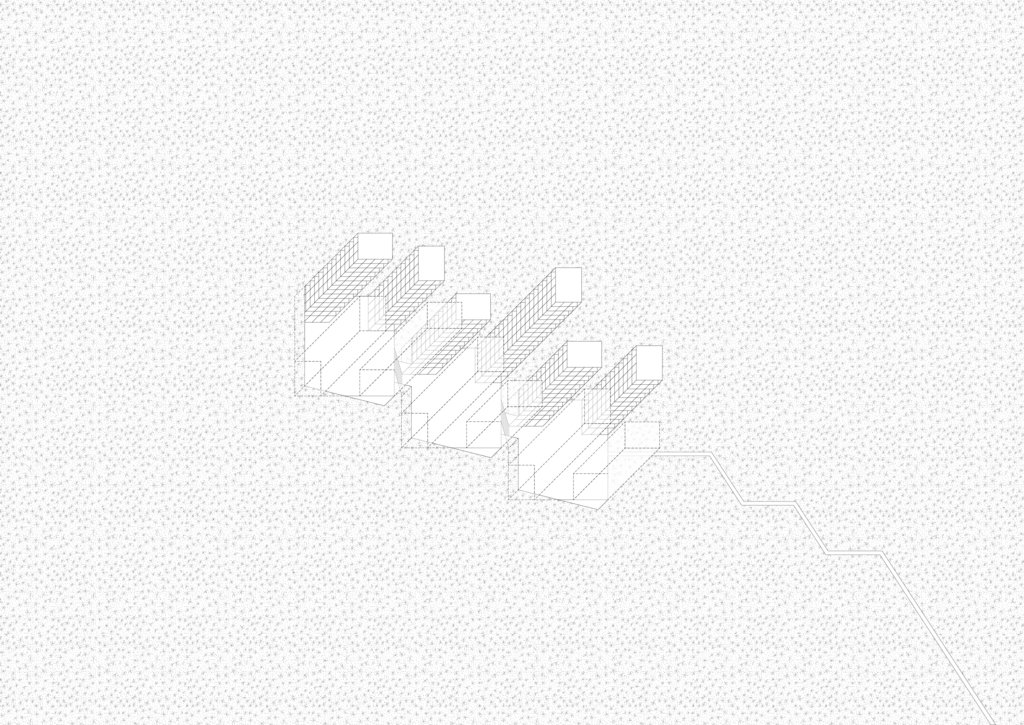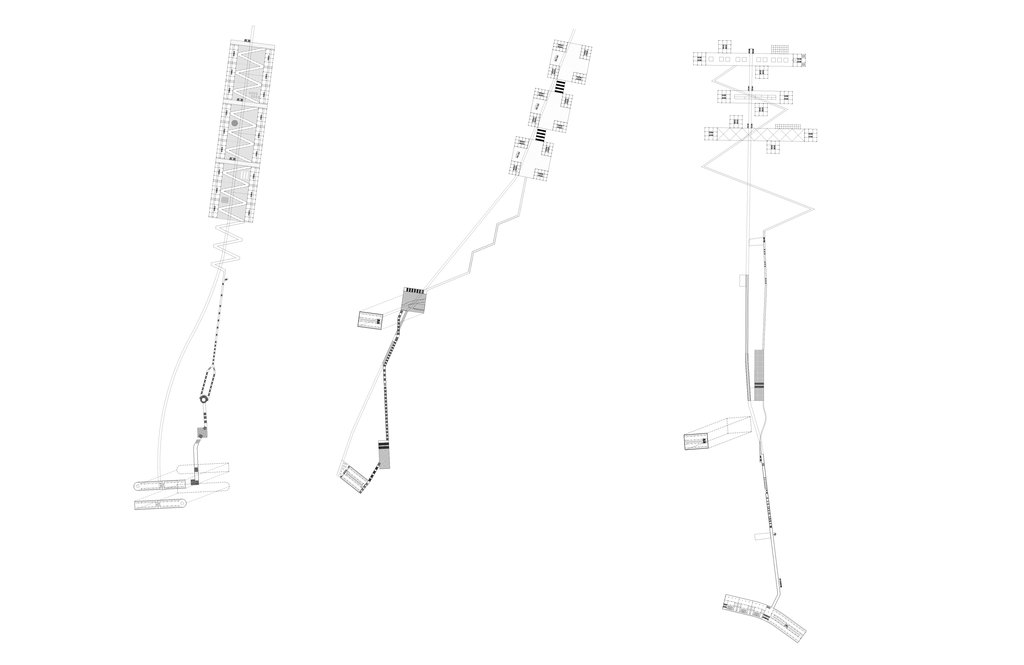

2011
LLAC architects: C. Antipas, L. Liefooghe
D. Glauden
Three insertions of high-density housing are located in the forest overlooking the city. Each of these insertions takes a specific form and is organized around one or more collective spaces framed by forest and separated from the city. The islands are connected directly to the existing urban fabric by a system of fast funiculars. The funiculars stop in reciprocal urban places located near underground car parks and public transport links.
The transportation system allows the realisation of homes that are physically located in the middle of a forest but are virtually downtown. Physical distance is short-circuited by fast transport links. The transport stops; grafted onto the urban fabric, become an extension of the entrance halls of the apartment buildings with the funicular cabin becoming the elevator to the apartment door.
The fast connection of the funicular is doubled by a slow, pedestrian route. Three walks, via a succession of flights of stairs and small squares, reinforce the network of footpaths already present in Neuchâtel.
At the intersections of the new funicular and pedestrian routes "urban lobbies" are created. These new places inject density while sparing the city from increased volume.
The three islands are each composed differently.
However, they are all organized around a central semi-public space edged by the forest and new buildings. These spaces are delocalized urban places in the middle of nature. The large scale and density of development is offset by the strong presence of the forest and the view of the Alps.
This ‘island’ proposal breaks with the approach to urban development that has prevailed to date. In the past Neuchâtel has grown by adding strips of development parallel to the shores of the lake which push the forest further and further from the historic center. The insertion of dense islands organized perpendicular to the banks of the lake allows for the proximity between the city and its natural hinterland to be retained.



